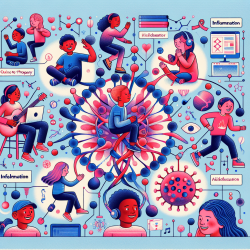Introduction
The PAX Good Behavior Game (PAX GBG) is an evidence-based intervention designed to foster nurturing environments within classrooms. Originating from the Good Behavior Game (GBG), PAX GBG integrates behavioral science principles to promote peace, productivity, health, and happiness among students. This blog explores how practitioners can leverage PAX GBG to enhance classroom management and student outcomes.
Understanding the PAX Good Behavior Game
The PAX GBG is built on the concept of evidence-based kernels—simple, effective strategies that influence behavior. These kernels work through antecedents, reinforcers, relational networks, and physiological effects to promote prosocial behavior and reduce disruptive actions. By incorporating these kernels into daily classroom routines, teachers can create a positive and supportive learning environment.
Implementing PAX GBG in the Classroom
Implementing PAX GBG involves several key components:
- PAX Vision: Teachers and students collaboratively create a vision of what a peaceful and productive classroom looks like. This vision serves as a guide for desired behaviors.
- Granny’s Wacky Prizes: These are fun, brief activities used as rewards for positive behavior, reinforcing students' engagement and motivation.
- Tootle Notes: Students write praise notes to peers, promoting a culture of recognition and appreciation.
- PAX Quiet: A non-disruptive signal used to gain students' attention quickly, reducing transition times and maintaining focus.
Benefits of PAX GBG
Research indicates that PAX GBG effectively reduces disruptive behaviors and enhances prosocial interactions. By fostering self-regulation and cooperation, students are better equipped to succeed academically and socially. Moreover, the program's emphasis on positive reinforcement and shared relational networks contributes to a nurturing classroom culture.
Encouraging Further Research
While the PAX GBG has demonstrated success in various settings, continued research is essential to refine and expand its application. Practitioners are encouraged to explore the impact of PAX GBG on diverse student populations and settings, contributing to a broader understanding of its efficacy.
Conclusion
The PAX Good Behavior Game offers a transformative approach to classroom management, emphasizing the importance of nurturing environments for children's development. By implementing evidence-based kernels, educators can create positive and productive classrooms that support students' well-being and academic success.
To read the original research paper, please follow this link: The PAX Good Behavior Game: One Model for Evolving a More Nurturing Society.










